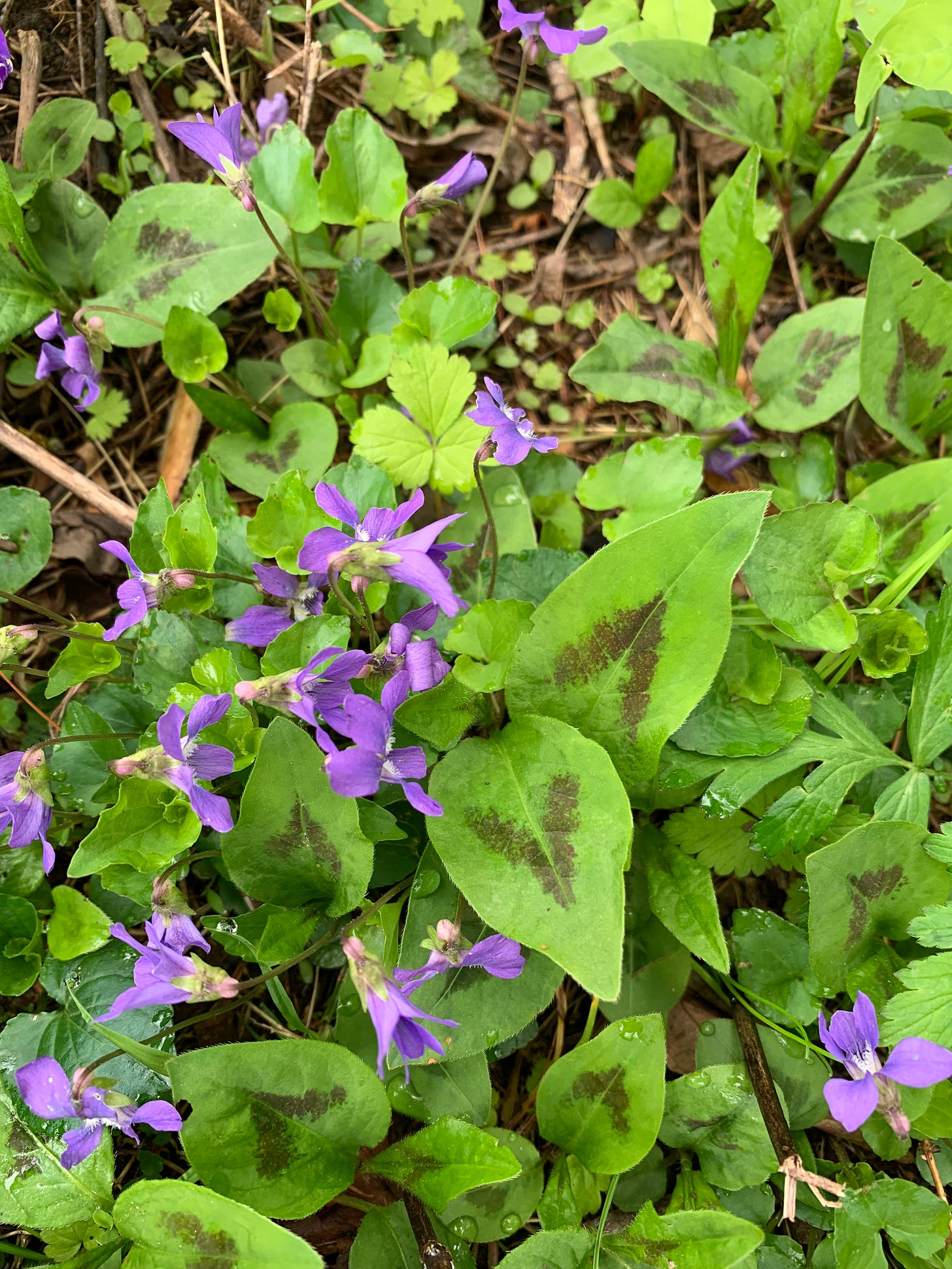A Garden in Service to Nature
Puddock Hill Journal - Entry #5: A Modern Ethic for Backyard Gardens
Sometimes I think everything you need to know about humanity is contained in the phrase “ecosystem services.”
This is the term of art we humans invented to describe how a given biome—a forest, a wetland, a meadow, etc.—contributes something of benefit to…well, to whom, exactly?
Healthy natural systems exist in a kind of equilibrium, which means the elements of the system help one another thrive. To whose balance sheet does that get posted? Are the arthropods keeping score?
Of course, we usually use the term “ecosystem services” not to describe relationships among other species exactly, but rather to explain how a segment of nature advances our own interests as humans.
Take a forest, for example. In deciding whether to cut down the forest, we might factor in the ecosystem (or ecological) services that the collection of trees provides, such as lowering nearby air temperature by casting shade, slowing storm runoff that might otherwise cause flooding or erosion, filtering impurities from water before it enters the aquifer, or creating recreational opportunities that promote human health or enjoyment.
Other factors in evaluating ecosystem services may include preserving biodiversity, but when we use the term in reference to biodiversity, again, we’re usually explaining the benefits to humans, not to amphibians or butterflies or anything else. For instance, one classic rationale for not leveling tropical rainforests has not been preservation for preservation’s sake but because plant and animal species, some of them yet to be discovered, might one day contribute to future pharmaceutical discoveries.
What’s wrong with that? Nothing, if that’s what it takes to convince our fellow citizens to do the right thing. But it does say a lot about our species if we can only motivate people to do the right thing by appealing to their selfishness.
For my Masters of Environmental Studies, I recently completed an independent study about water issues in the American Southwest, using the classic book Cadillac Desert by Marc Reisner as a point of departure. Reisner’s magnum opus addresses the unacknowledged fragility of water infrastructure in arid landscapes where tens of millions of people live and farmers raise many agricultural commodities.
When I’m not home in Pennsylvania, I spend a lot of time in the California desert these days, and I have often marveled at the sheer waste that characterizes life in populated areas out there. The Coachella Valley, for example, is naturally a blow desert, but 124 golf courses soak up scarce water, some restaurants and homes use misters to cool their patios, and, while xeriscapes are increasingly common, one can barely get through the day without seeing sprinklers watering patches of lawn in the broiling sun.
As an Easterner, born and bred, I find this quite shocking. Reisner explains the different ethic thusly: “In the East, to ‘waste’ water is to consume it needlessly or excessively. In the West, to waste water is not to consume it—to let it flow unimpeded and undiverted down rivers.”
Of course, the natural systems that once depended on that water, such as migratory birds of the Pacific flyway, which has been reduced in a century to 10 percent of its former self, can no longer “consume” the water if it’s no longer there. But now, as heavily engineered water resources shrivel in a changing climate, neither can we.
What’s this got to do with backyard stewardship? The central principle behind our efforts at Puddock Hill is not to make choices based simply upon what’s in it for us right now, such as the beauty of an exotic flowering plant that a previous generation may have chosen, but to acknowledge our small place in the web of life.
I prefer to think of our shared ecosystem as a place upon which we and all other living species have equal claims. But our self-interest, delivered in the form of ecosystem services, if you will, is also deeply entwined with the stability of nearby biota.
Through irresponsible practices, humans have stressed nature’s fabric to the breaking point, and in fact the result may be a reduction of “services” that could make our lives less enjoyable or even less livable one day soon.
The good news is our collective commitment to backyard stewardship can help reverse the imbalances we’ve created through previous poor choices. It’s time for humans to quiet our demands upon nature and turn the tables by serving the non-human life around us.
This week…
Above the big pond, pretty violets grow among leaves of native jumpseed aka Virginia knotweed (Persicaria virginiana), not to be confused with Japanese knotweed (Fallopia japonica), an invasive that should be eradicated where found.
A riot of native fleabanes (Erigeron sp.) on the big pond dam. This species is very happy at Puddock Hill this time of year.
Close up of one growing as a weed closer to the house. It’s in the flower bed but I couldn’t bear to pull it up.
I think this is a Japanese snowball viburnum (Viburnum plicatum), planted many years ago by the former owner. Not native, obviously, but it’s pretty and it’s not bothering anyone!
Finally, we have a wonderful carpet of native golden ragwort (Packera aurea) down by the big pond.
Here it is up close:








